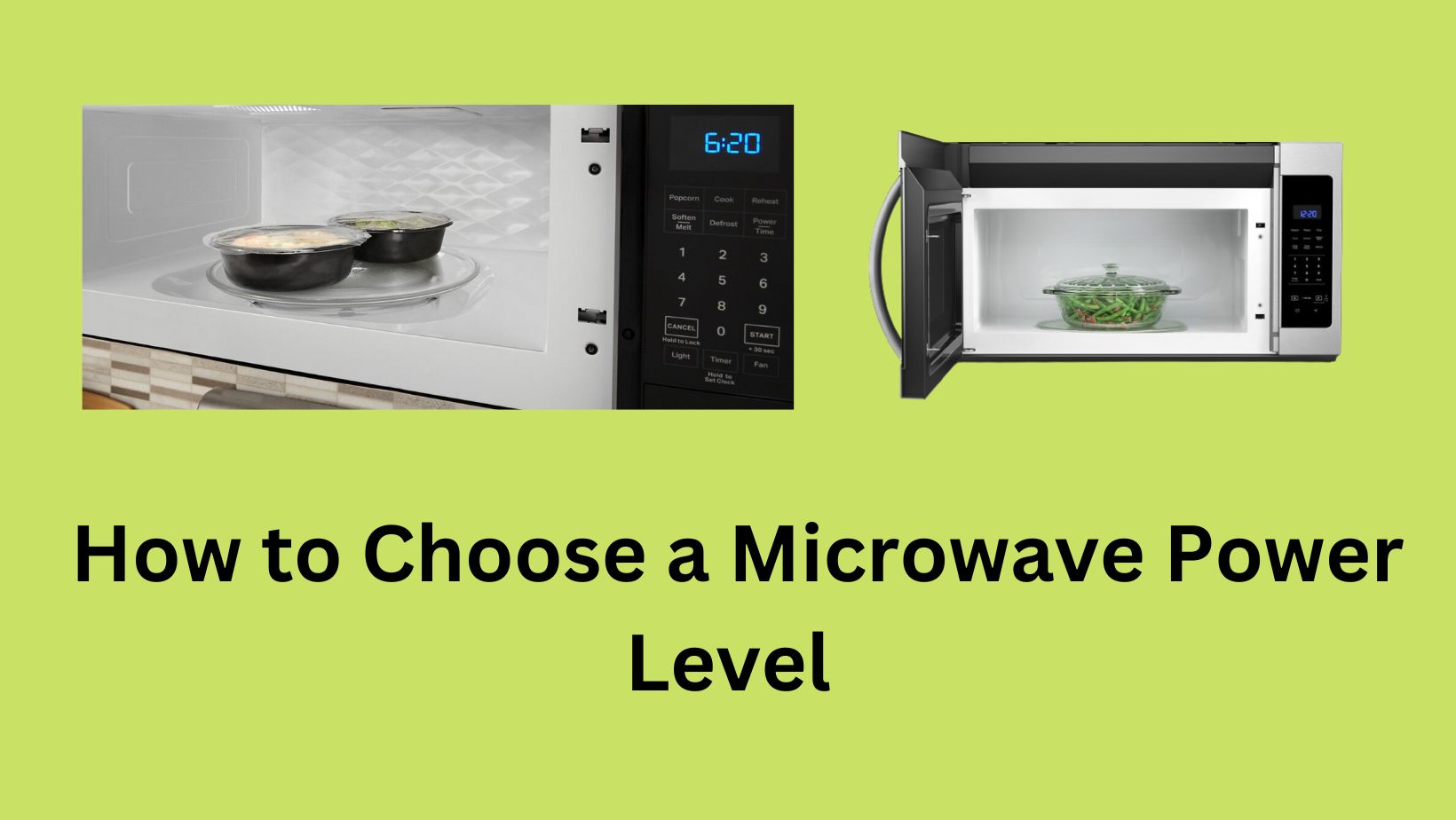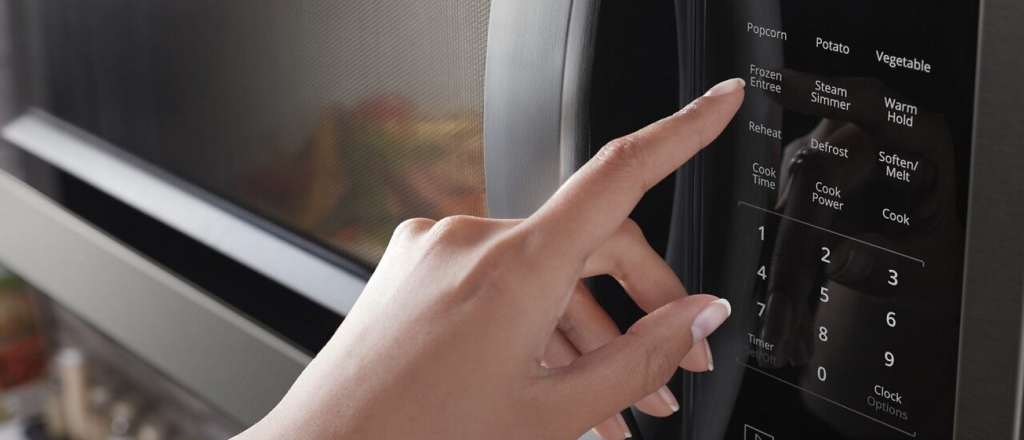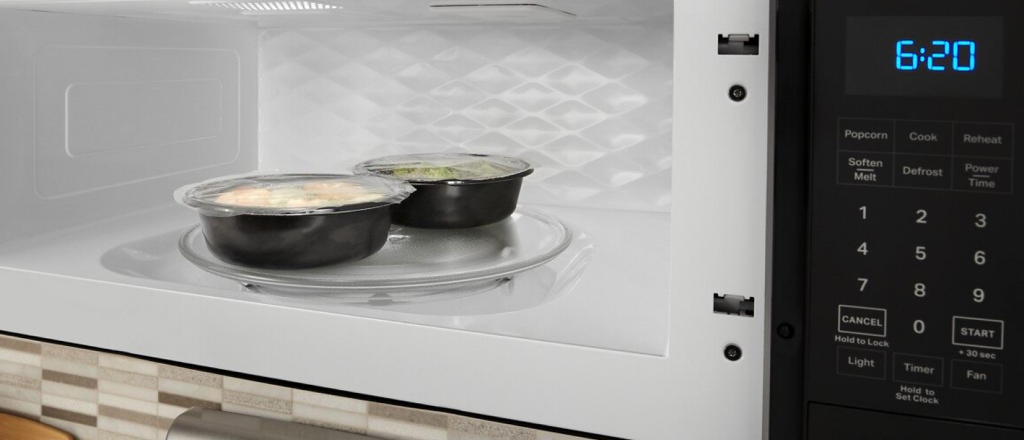How to Choose a Microwave Power Level? (Ultimate Guide)

Dear reader, if you purchase through links on our site, we may earn a small affiliate commission to help support the blog - at no extra cost to you. And it never influences our product selection process. Thank you!
Microwaves are a great way to cook food at home. They heat food faster than conventional ovens or stoves, and they don’t require much space. If you want to get started using microwaves, you should start out with a basic microwave power level. This guide will show you how to choose a microwave power level.
Microwaves are also known as radio frequency waves. These waves are produced by high-voltage electricity passing through a magnetron inside the microwave. The magnetron produces electromagnetic radiation in the form of microwaves.
There are two types of microwaves: continuous wave (CW) and pulsed wave (PW). CW microwaves produce a constant stream of energy. PW microwaves create short bursts of energy. Both types of microwaves are safe for cooking food.
What are Microwave Power Levels?
Microwave ovens produce electromagnetic radiation (EMR) waves. EMR waves are invisible to the naked eye but can damage living tissue. When used correctly, however, microwave ovens can be an effective tool for heating food.
Microwaves are everywhere these days. From microwaving popcorn at home to using them in hospitals and restaurants, they have become essential tools in our everyday lives.
Microwaves are electromagnetic waves that travel through space. They are produced by radio stations or other devices such as cell phones. The microwave oven uses high-frequency radiation to cook food.
However, the amount of power that goes into a microwave varies depending on its type. There are three types of microwaves: low-, medium-, and high-power levels. Low-power levels are usually found in household appliances such as rice cookers and coffee makers. Medium-power levels are typically found in commercial kitchen equipment. High-power levels are often used in hospital settings.
What does “Medium” or “Low” Actually mean?
Microwaves are everywhere these days. From microwavable meals at restaurants to home appliances, they seem to be indispensable. But did you ever wonder why some microwave ovens say Medium power level and others Low? What exactly does that mean?
Microwaves are electromagnetic waves that travel through space. They are invisible and harmless to humans, but they can cause damage to food if exposed for too long. The amount of time required to cook foods varies depending on their size and density. For example, large pieces of meat require longer cooking times than smaller ones.
A medium power setting means that the microwave has enough energy to heat food evenly without burning it. On the other hand, low-power settings are recommended for delicate items such as fruits and vegetables because they might get overcooked.
How to Choose the Right Power Level for Food or Drink?
Most microwaves come equipped with a minimum of five powers. These are 100%, 75%, 50%, 25%, and 0%. Many microwaves have additional selections, but these five represent the most important ones.
High power is ideal for heating things up fast. For example, boiling water or cooking non-creamy soups are excellent applications for high power. Medium-high settings can help you steam or fry food, while low settings are gentle but work as a dehumidifier.
Here’s a breakdown of common foods along with the wattage you should use.

Use microwave power levels for the best results
Microwaves are great at heating food, but they aren’t the only way to cook. What other cooking methods should you consider using?
Microwave ovens are convenient because they heat foods quickly. They also allow you to control the temperature precisely. However, microwaving isn’t always the healthiest option. For example, some studies suggest that microwaved food may contain harmful chemicals.
There are several ways to cook food without using a microwave. These include grilling, baking, frying, steaming, boiling, roasting, broiling, poaching, sautéing, stewing, stir-frying, and simmering. Each method has its advantages and disadvantages. The key is knowing how to choose the best cooking technique for the recipe you want to prepare.

- High/Full Power (100%) – non-cream soups, pasta, poultry, ground meats, most vegetables, bacon, and fish.
- Medium-High Power (70%) – ribs, creamy soups, reheating leftover meals, casseroles, and foods with cheese.
- Medium Power (50%) – pork, eggs, melting chocolate.
- Medium-Low Power (30%) – simmering foods such as chili, sauces, rice, and cereal. Also the “Defrost” setting on most microwaves.
- Low Power (10%) – defrosting large meat items such as turkeys. Can also be used to keep foods warm.
Understand your microwave settings and how to use them.
Microwaves come in varying sizes, shapes, and colors. They’re used to heat foods quickly without having to add any extra energy. You can program them to cook certain foods at specific times, so they won’t burn. Some microwaves have presets that allow you to set the cooking temperature and duration. Others let you choose between regular, low, high, and defrost modes.
Place food in microwave-safe dishes and containers
The heating element in a microwave oven uses electromagnetic radiation to heat objects placed within them. Certain types of dishware can interfere with the operation of a microwave oven. Always make sure you do not put any metal items into a microwave oven, including silverware, pots and pans, and knives. Also, avoid placing glass containers or plastic containers in a microwave because they may shatter if heated too much.

Prepare food for microwaving
Microwave cooking has become very common these days. Many households now rely on microwave ovens to cook their meals. They also use them to reheat leftovers or even defrost frozen foods.
Microwaves heat food using electromagnetic waves instead of convection currents. The result is faster heating and less energy consumption compared to conventional methods such as boiling water. Microwaves are widely used because they allow us to prepare our food without having to stand over a hot stovetop.
However, microwave cooking isn’t always safe. There are some potential health risks associated with microwaved food. If you want to ensure that your family eats nutritious meals, then you should start preparing them in advance. This way, you won’t have to worry about overcooking or undercooking your food.

Cover food to avoid messes
Microwave ovens are great at heating food, but they aren’t very good at keeping things clean. If you don’t want to get stuck cleaning up after dinner, then you’ll want to invest in some kitchenware that keeps your microwave free from spills and splatters.
Microwaves heat food using electromagnetic radiation (EMR). This means that microwaves can penetrate materials such as plastic and glass, causing them to break down into smaller pieces. When these fragments hit the inside of your microwave, they can cause damage or even start fires.
To prevent this, you should cover your microwave with a non-stick surface. The easiest way to do this is by buying a microwave-safe plate. Alternatively, you can also use a silicone mat instead. These mats are designed specifically to fit over your microwave and provide a non-slip surface.
Final thought
The power level of a microwave is important to consider because it can impact the cooking time, texture, and even moisture of your food. The next time you are reheating something or cooking from scratch, take a moment to consider what power level will work best for what you are making. Using these tips as a guide, you should be able to find the perfect balance of heat and time for whatever you’re microwave meals. Do you have any other tips for choosing the best microwave power level? Let us know in the comments below!
- Best 3 Air Fryer And Microwave Combo - September 22, 2024
- Kitchen Knives - May 3, 2024
- Top 10 Best kitchen egg cooker [High Quality] - May 3, 2024
